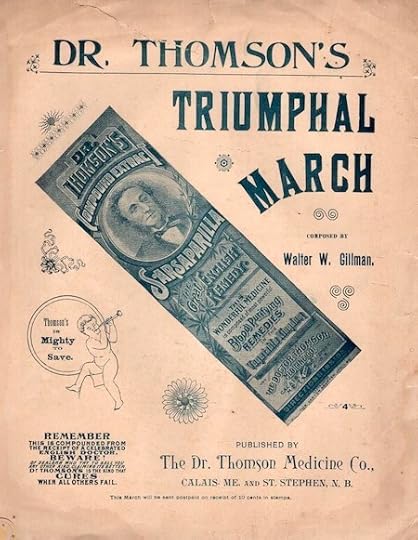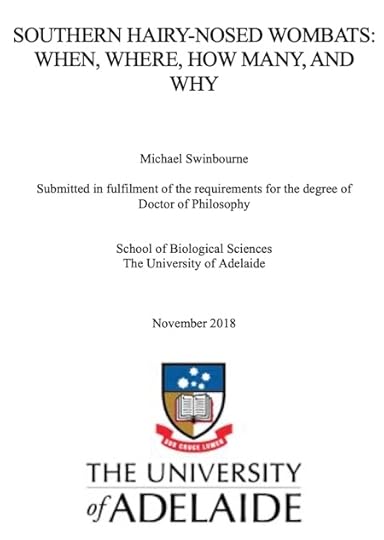Marc Abrahams's Blog, page 59
February 14, 2022
Emotional Judges and Unlucky Juveniles [study]
It has been said that (in some cases) court judges are more lenient on those accused of crimes if the date of the court hearing falls on the defendant’s birthday.
But can things also work in the reverse direction? What if, for example, the judge’s favorite football team have just lost a match? Would they dish out harsher sentences?
In 2016, a research team from Louisiana State University investigated :
We calculate that each upset loss of the LSU football team generates excess punishments of juvenile defenders in Louisiana by a total of more than 1,332 days, including time in custody and probation. Importantly, 159 extra days of jail time has been assigned to juveniles convicted of a felony due to an upset loss in a football game
Our results indicate that emotional stress is responsible for this reaction of judges because we find that the entire set of results are driven by judges who have received their bachelor’s degrees from LSU.
See : Emotional Judges and unlucky Juveniles National Bureau of Economic Research, working paper.
February 13, 2022
Podcast Episode #1088: “Cursing Babinski”
In Podcast Episode #1088, Marc Abrahams shows an unfamiliar research study to psycholinguist Jean Berko Gleason. Dramatic readings and reactions ensue.
Remember, our Patreon donors, on most levels, get access to each podcast episode before it is made public.
Jean Berko Gleason encounters:
“The Babinski Sign,” P.H.W. Rayner, British Medical Journal, vol. 314, February 1997,
p. 374.
Seth Gliksman, Production Assistant
Available on Spotify, Apple Podcasts, Overcast, Google Podcasts, AntennaPod, BeyondPod and elsewhere!
February 12, 2022
Secrets in the Scat
Yes, the wombat-cubical-poo acceptance speech at the Ig Nobel Prize ceremony does get a moment in the sun in the NOVA television documentary “Secrets in the Scat.”
NOVA describes the episode this way: “Scott Burnett is ‘Scatman’—an Australian ecologist on the trail of the secrets of poop. By identifying and analyzing animal scat for DNA and hormones, he discovers essential details of their behavior, how they fit in the ecosystem, and even how to protect them.”
Burnett is a colleague of the international [USA, Taiwan, Australia, New Zealand, Sweden, and the UK] team [Patricia Yang, Alexander Lee, Miles Chan, Alynn Martin, Ashley Edwards, Scott Carver, and David Hu] team that was awarded the 2019 Ig Nobel Physics Prize for studying how, and why, wombats make cube-shaped poo.
The Ig-winning team has several publications documenting that research. These include:
“How Do Wombats Make Cubed Poo?” Patricia J. Yang, Miles Chan, Scott Carver, and David L. Hu, paper presented at the 71st Annual Meeting of the APS Division of Fluid Dynamics, Abstract: E19.0000, November 18–20, 2018“Intestines of Non-Uniform Stiffness Mold the Corners of Wombat Feces,” Patricia J. Yang, Alexander B. Lee, Miles Chan, Michael Kowalski, Kelly Qiu, Christopher Waid, Gabriel Cervantes Benjamin Magondu, Morgan Biagioni, Larry Vogelnest, Alynn Martin, Ashley Edwards, Scott Carver, and David L. Hu, Soft Matter, vol. 3, 2021NOTE: This was the SECOND Ig Nobel Prize awarded to Patricia Yang and David Hu. They and two other colleagues shared the 2015 Ig Nobel Physics Prize, for testing the biological principle that nearly all mammals empty their bladders in about 21 seconds (plus or minus 13 seconds)
February 11, 2022
The Relative Value of Big Science Prizes
Back in 2013 The Economist magazine published this chart showing the amount of money awarded with each of the big science prizes. The amounts for most or all of these prizes has since risen. The amount for the Ig Nobel Prize now, in a way, tops the list. Each winner (or winning team) of an Ig Nobel Prize now gets ten trillion dollars — a Zimbabwean ten trillion dollar bill.
That Zimbabwean currency itself was the subject of a prize. The 2009 Ig Nobel Prize for Mathematics was awarded to Gideon Gono, governor of Zimbabwe’s Reserve Bank, for giving people a simple, everyday way to cope with a wide range of numbers — from very small to very big — by having his bank print bank notes with denominations ranging from one cent ($.01) to one hundred trillion dollars ($100,000,000,000,000).
Dr. Gono explained the reasoning behind his invention, in the book Zimbabwe’s Casino Economy — Extraordinary Measures for Extraordinary Challenges, Gideon Gono, ZPH Publishers, Harare, 2008, ISBN 978-079-743-679-4.
[image error]
February 9, 2022
Southern Hairy-Nosed Wombats: When, Where, How Many, Why
All the traditional (in some traditions, if not all traditions) basic questions about southern hairy-nosed wombats are addressed in a doctoral thesis:
“Southern Hairy-Nosed Wombats: When, Where, How Many, and Why,” Michael Swinbourne, Ph.D. thesis, University of Adelaide, School of Biological Sciences, 2019.
(Thanks to Tom Gill for bringing this to our attention.)
February 7, 2022
Judicial Leniency on Defendant Birthdays [study]
A French / US research team, who analysed the outcomes of more than 4 million court cases, found that, if you’re a defendant :
Having a decision on one’s birthday reduces the sentence by 4 days out of an average total sentence length of 127 days
If you’re wondering why a defendant may get more favorably treated if it’s their birthday :
The effect seems at least partly driven by the fact that the birthday defendants are convicted of a less severe crime, a proxy for partial acquittal or re-qualification in court, effectively amounting to a shorter maximum sentence length of 27 days out of 1,283 (a 2% reduction)
See : Clash of Norms: Judicial Leniency on Defendant Birthdays
February 4, 2022
Exchanging Shit for Brains, Postmortem [research study]
Although they perhaps were not allowed to say it plainly in their published study, three scientists have identified a clear case of exchanging shit for brains. Details (with some euphemisms) are in the study:
“Coprolites From Calvert Cliffs: Miocene Fecal Pellets and Burrowed Crocodilian Droppings from the Chesapeake Group of Maryland, U.S.A.“, Stephen J. Godfrey, Alberto Collareta, and John R. Nance, Rivista Italiana di Paleontologia e Stratigrafia [Research in Paleontology and Stratigraphy], vol. 128, no. 1, March 2022, pp. 69-79. The authors, at the Smithsonian Institution, the Università di Pisa, and the Calvert Marine Museum, report:
New finds of remarkable coprolites (fossilized feces) are here reported from the famous Miocene marine sediments of the Chesapeake Group exposed along Calvert Cliffs (Maryland, U.S.A.)….
[H]ere we provide the first description of tiny invertebrate fecal pellets. Thus far, these fecal pellets have only been found in the upper Miocene (Tortonian) St. Marys Formation. The micro-coprolites represent the coprulid ichnospecies Coprulus oblongus. The fecal pellets are found in small clusters or strings of dozens to masses of many hundreds….
[Specimen] CMM-V-2022 (Fig. 3B-D, the fecal pellet-infilled neurocranium of [the specimen] Astroscopus countermani ) is the first fossilized vertebrate braincase known to be infilled with feces…
In the News, Ever So Slightly CladNews editors also, so far, have used slightly twisty language to tell the tale. The New York Times, for example, gives this headline and subheadline to an account written by Jeanne Timmons: “Why Did a Fish Have Fossilized Feces Where Its Brain Once Was? It’s the first time a vertebrate’s braincase has ever been found full of coprolites, scientists say.”
“Sarsaparilla in Syphilitic Cachexia” is Not a Song
In response to a question from a “please do not use my name” reader, we want to clarify that “Sarsaparilla in Syphilitic Cachexia” is not a song title. “Sarsaparilla in Syphilitic Cachexia” is the title and subject of a letter in the British Medical Journal:
“Sarsaparilla in Syphilitic Cachexia,” Felix Semon, British Medical Journal, vol. 1, no. 2361, 1906, p. 771. The letter begins:
SarsaparillaSIR,-The fact that my friend Professor Clifford Allbutt has found it necessary to vindicate English medicine against me fairly takes my breath away. I cannot, on re-reading my lecture, conceive what expression of mine could have given rise to such an erroneous interpretation of my intentions. The facts are simply these: Finding that some patients of mine, whom I had sent to Aix-la-Chapelle, and whose cases had proved refractory to both mercury and iodide preparations, had derived great benefit at the hands of the Aix-la-Chapelle physician from the administration in large doses of two sarsaparilla preparations ordinarily used by him, of which the one, Zittmann‘s, is universally known, whilst the other, Kobert’s, had been so far unknown to myself, I thought it simply right to give the formula of the latter, and to recommend the administration of sarsaparilla in these forms in my lecture in order to let other patients derive the same benefits that my patients had obtained. That is all, and I really do not think that anything could be more natural than that.
There may be a reader of two of this blog who is under the age of 100, and who may be unfamiliar with sarsaparilla. Sarsaparilla is the name of a soft drink, and also of several different kinds of vegetation.
Sarsaparilla and Song
There are connections between Sarsaparilla and the world of music. Intrepid persons who have excessive curiosity can begin to pursue those connections in the may 1959 issue of Minerva Farmaceutica, and also in this video performance of the song “Rufus Xavier Sarsaparilla”:
…and also in sheet music for the song “Dr Thomson’s Triumphal March“:

February 3, 2022
Brian, a New Typo of Research
A new typo of research has just been published in the medical journal Acta Neurochirurgica:
“Brian retraction injury after elective aneurysm clipping: a retrospective single‑center cohort study,” by B. Konya, · J. W. Dankbaar, and · A. van der Zwan, 2022.
(Thanks to Retraction Watch and Ivan Oransky for bringing this to our attention.)
February 2, 2022
An Italian Video About Irony and the Ig Nobel Prizes
Says the video’s maker:
“What if I told you that a physicist earned a major award for magnetically levitating a frog, what would you think? It really happened and this story can only refer us to a central question in today’s scientific debate: is there scientific research that is useless? Today we are talking about the famous Ig Nobel Prize – a play on words between the oldest and most serious Nobel and the word ignoble – which assigns ten awards, without any monetary contribution, to “strange, funny and even absurd” research. Animated by that American pragmatism, at times so effective, direct and at the same time ironic, the organizers thought of an event that, while making people smile at first, could also make people reflect and spread science and its value. An event that intends to reward the unusual, the imaginative, and stimulate the interest of the general public in science. Studies that appear bizarre, useless or even ridiculous can instead prove to be important, they can generate entire fields of research, they can favor progress through unpredictable mechanisms. History is full of examples capable of supporting this thesis, but the Ig Nobel are able to prove it to us with a smile. They spread a form of disclosure, ironic and very powerful, which should be more practiced to mend that dangerous laceration that dangerously separates, today more than ever, the scientific community and society.”
Marc Abrahams's Blog
- Marc Abrahams's profile
- 14 followers




